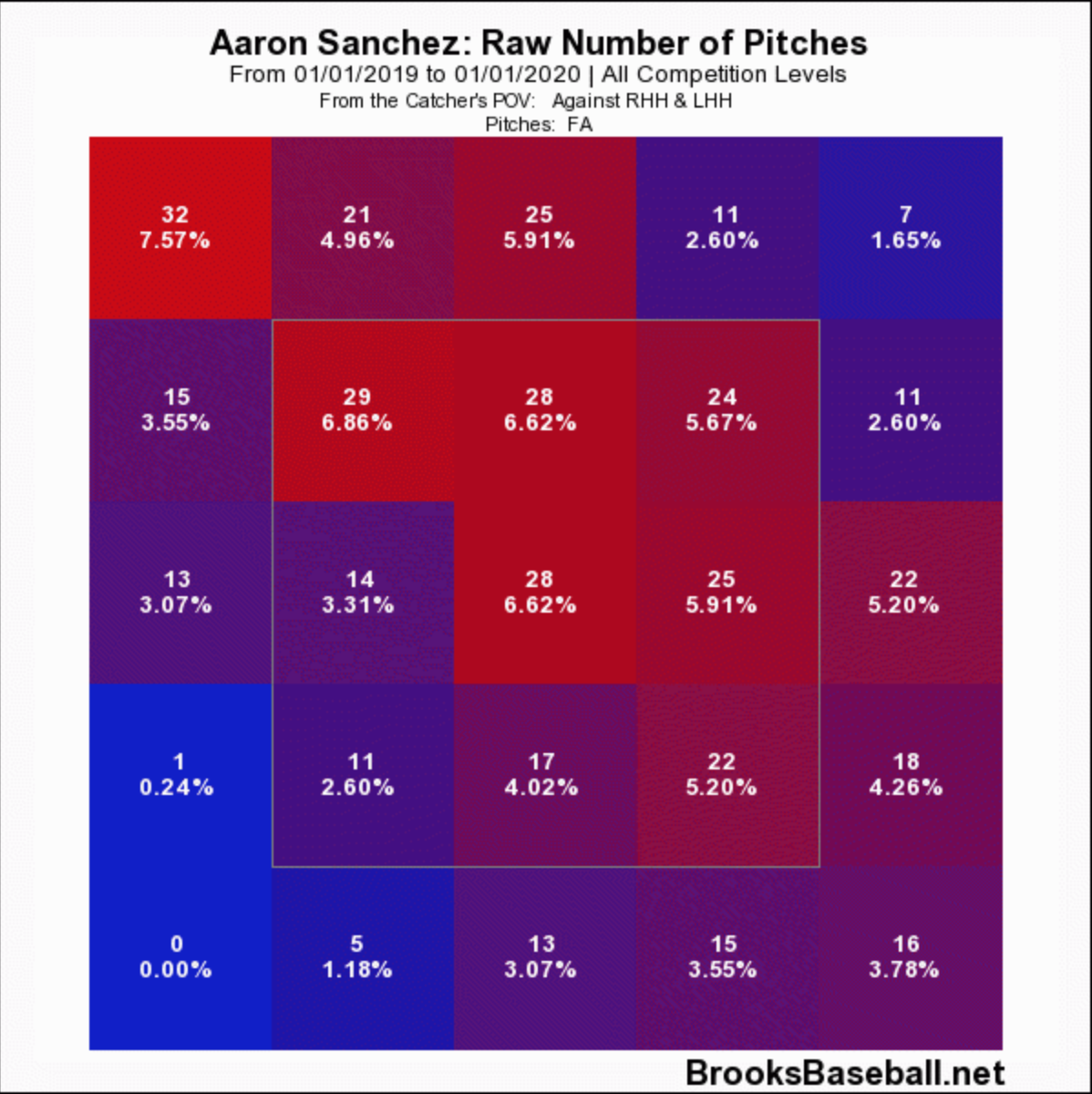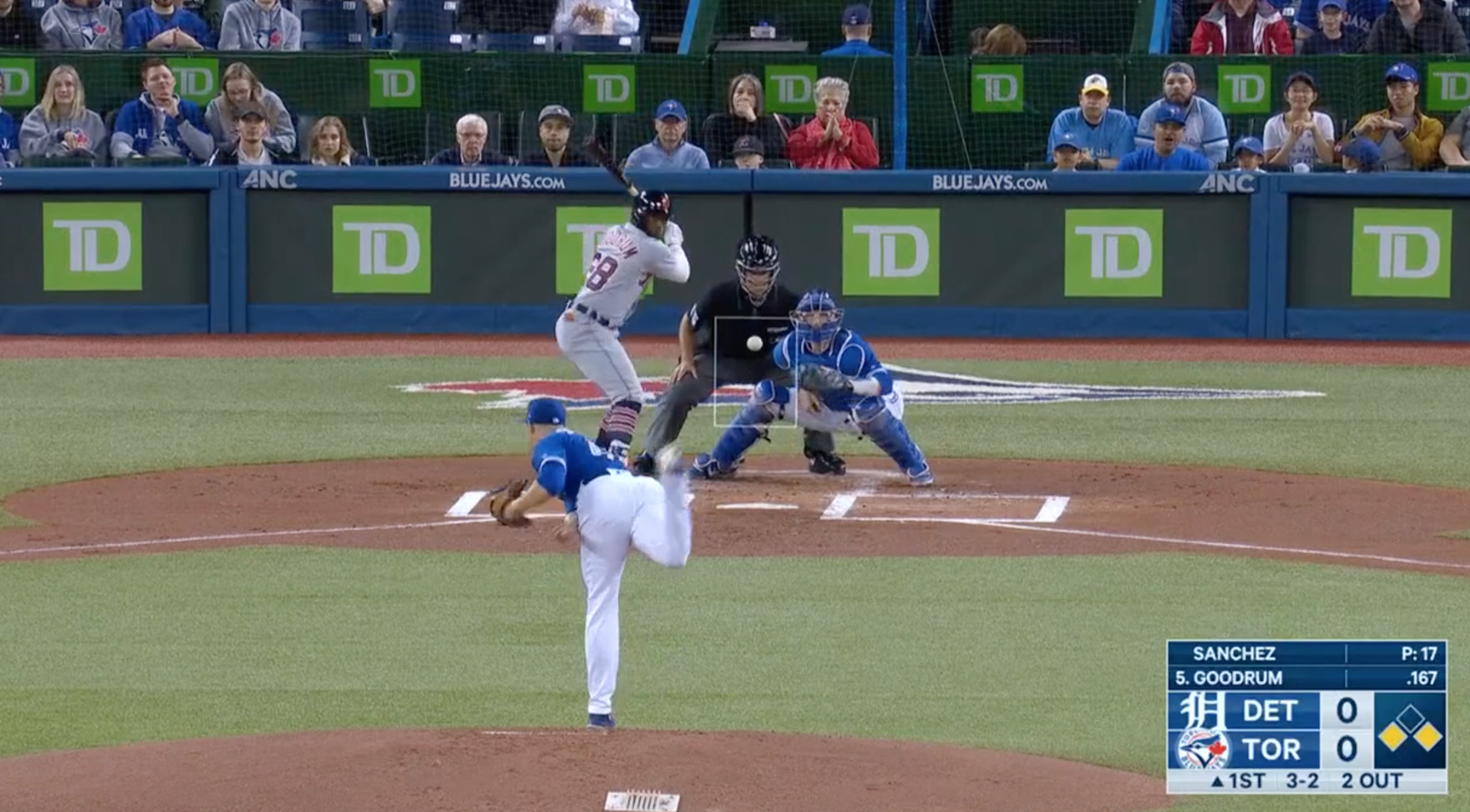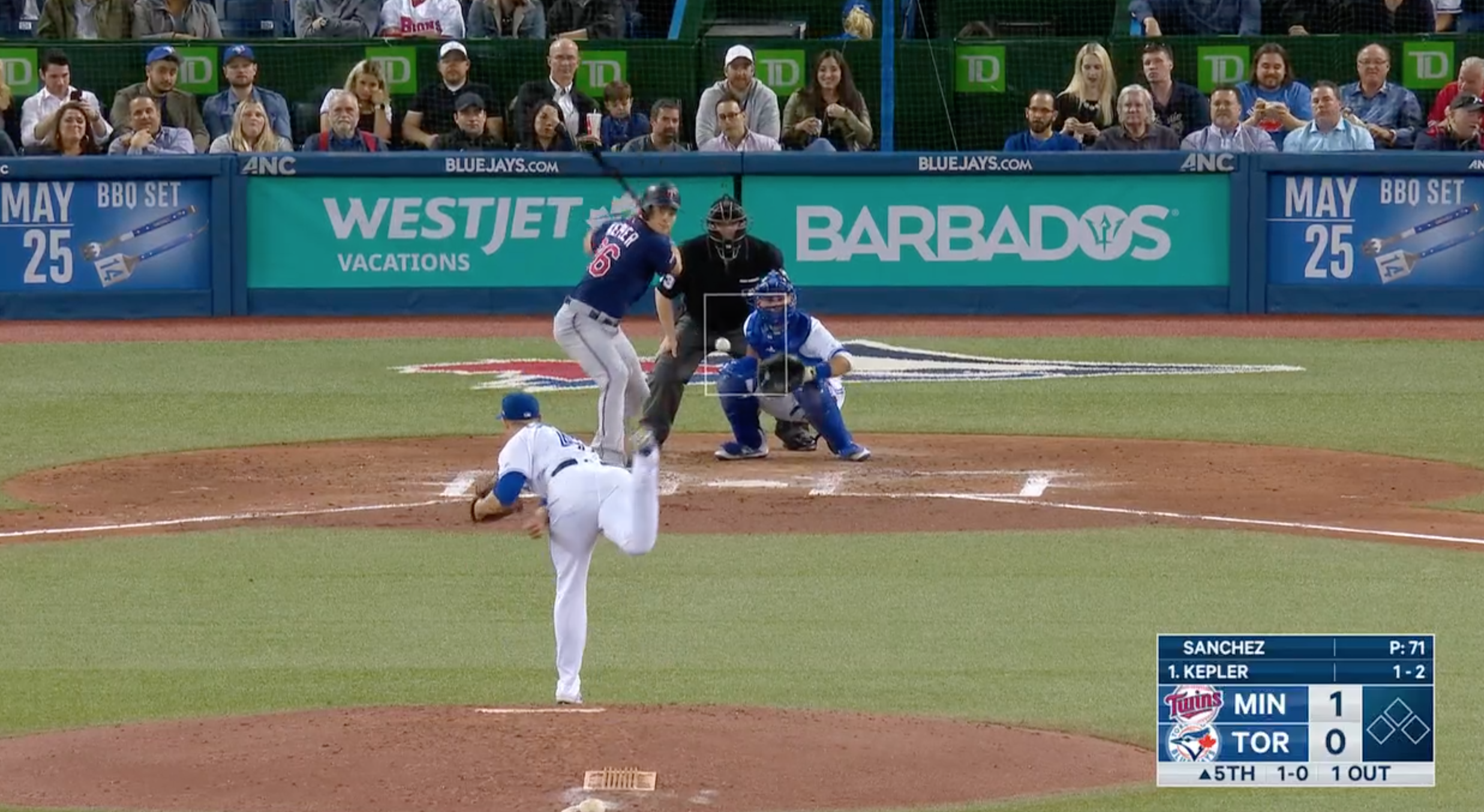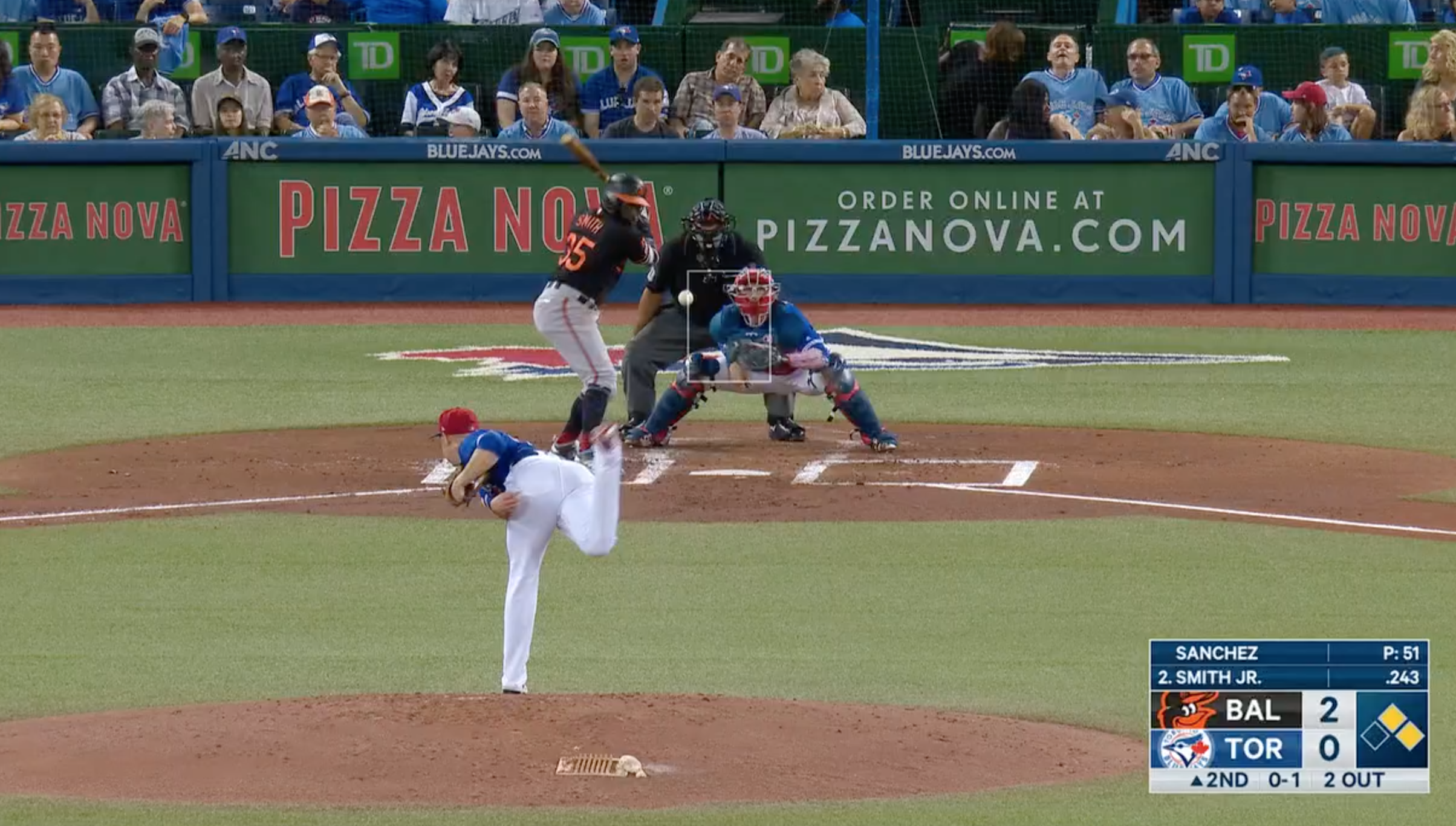Aaron Sanchez debuted at 21 years old—a flame-thrower who fired two hitless innings in relief against the defending champion Boston Red Sox. For the remainder of that 2014 season, and for a majority of the next year, Sanchez continued to come out of the bullpen before finally getting his chance to start. By 2016, Sanchez had grabbed the AL ERA title, garnered AL Cy Young votes, and was the dominant force behind a Toronto Blue Jays team that made the ALCS for a second straight season. Though he was able to decrease his walk rate to three per nine innings, it’s still a fairly average rate for a starting pitcher.
That issue was compounded, as for the past three seasons he’s posted walk rates near five walks per nine innings—just a horrendous mark. He’s never reached lofty strikeout rates—never even getting above eight strikeouts per nine innings—and the issue with his command pushed him out the door, as he moved on to the Houston Astros in Wednesday’s trade-deadline deal. The Astros now have another problem to fix—nothing that they have not done before, revitalizing the careers of Justin Verlander, Gerrit Cole, Brad Peacock, and a number of pitchers since the start of the team’s recent stretch of dominance. For a guy with as much raw ability as Sanchez has on the mound, surely there’s something that can be done to help him return to form.
The Hard Stuff Isn’t Hard
Contrary to new-age analytics, Sanchez has been widely known to throw his sinker a lot—very often early in his career but less frequently in recent seasons. This year, Sanchez has thrown his four-seamer, sinker, curve, and changeup relatively at the same rate. Here, we can see how each pitch in his repertoire has fared via xwOBA.
| SI | FA | CU | CH | |
| Aaron Sanchez | .406 | .401 | .234 | .306 |
So, we notice the obvious first. Those xwOBA statistics on his sinker and four-seamer are equally atrocious. Still, there is a reason to believe that the four-seamer will have longer-term success for Sanchez than the sinker.
For the sinker, Sanchez has an average spin rate of 2,250 RPM, which is slightly above the average spin rate of 2,185 RPM for the pitch this season. For most offerings, you would generally be enthused to learn that a pitch has more spin. However, for a sinker, the greater the spin, the less effective the pitch becomes. As the spin rate increases on the fastball, the effect of gravity decreases, thus making the baseball hold the plane for longer rather than dropping—commonly known as the “rising ball.” To demonstrate this, we’ll take a look at someone who is also widely known for his sinker, and has a similar spin rate on the pitch but throws it much harder. Here, we compare the sinkers of Sanchez and Blake Treinen.
With Treinen’s sinker, you can see that not only does the pitch have a tailing action, but it also has the “sink” that makes the batter hit the top half of the ball, thus yielding ground balls. With Sanchez’s sinker, you see that there is not nearly as much drop and only tailing action. If a sinker does not sink, then the pitch is fairly useless.
With Sanchez’s four-seamer, the pitch yields an average spin rate with a roughly average velocity—the result is practically the same as the league-average four-seamer Bauer Unit (BU).
| Average Spin Rate (RPM) | Average Velocity (mph) | BU | |
| Aaron Sanchez | 2287 | 93.70 | 24.41 |
| MLB | 2269 | 93.12 | 24.37 |
Despite the mediocrity of the four-seamer itself, its major problem is its location so far this season.
Even though there is a greater concentration of pitches at the top of the zone, the general feeling is that the locations are fairly sporadic. Given the success of Sanchez’s curveball, it is critical that he is able to locate the four-seamer at the top of the zone consistently, giving him the ability to tunnel the curve with it.
As we speak of the inconsistency of Sanchez’s fastball location, we can diagnose the issue as a lack of fastball command, obviously, but furthermore, it’s a problem derived from inconsistent mechanics. Let’s look at the following finishes of three pitches: the four-seamer, sinker, and curve.
Four-seamer
Sinker
Curve
Sanchez’s finish on the curveball is a beautiful sight. His throwing hand nearly goes into the back pocket, the back almost flat—his limbs are in perfect harmony.
His fastballs are a different story. He’s relatively upright, does not have nearly the same finish at the end of his arm swing, and now you can start to conceptualize the issues of why Sanchez’s fastball command is so erratic. With a lack of finish on the pitch, compounding the issue of Sanchez’s rather odd arm movement prior to throwing, the four-seamer has not been an effective pitch. His new teammates Verlander and Cole are incredibly good with the way they finish, so hopefully, it rubs off on him.
Houston, We’ve Got a Problem
As we already know, Sanchez’s most effective pitch this season, and really throughout his career, has been the curveball. Even though Sanchez is now throwing the curveball a career-high 22.3% of the time, this still leaves more than 75% of his pitches being his four-seamer, sinker, and changeup. As he’s devoid of effective options after his curve, it only proves that the pitch should be thrown at a higher percentage. We’ve seen rates near 50% for the curveball from certain pitchers, none more intriguing than Lance McCullers Jr./strong>. McCullers’ curveball is a masterpiece, and he knows it—he threw 24 consecutive curves in Game 7 of the 2017 ALCS. Granted, McCullers throws his a little harder than Sanchez’s, but the point remains valid. Why not throw your best pitch as often as you can? Additionally, McCullers also had issues with not having a good pitch after his curveball, as he’s relied on a sinker to get him through—again, not a very good pitch, yielding an xwOBA of .363. Given the similarities between McCullers and Sanchez, my guess is that in the short term the Astros make Sanchez follow a McCullers-style approach.
Here is something more interesting to look at. Since Sanchez is arbitration-eligible at the end of this season where he’s only making $3.9 million and Cole is destined to leave in free agency due to the recent acquisition of Zack Greinke, there’s a good chance Sanchez will stay in Houston.
If Sanchez does spend next season with the Astros, it’ll imply that he’ll have the entire offseason to re-work his throwing motion—just like Cole did. Before Cole got moved to Houston, he was almost an entirely different pitcher with the Pittsburgh Pirates. Guided by sinker-happy pitching coach Ray Searage, he threw his sinker nearly 20% of the time, practically abandoned his curve, and even had a sinking action to his four-seamer—attributed to his lacking spin rate. After Cole was traded, he worked with Verlander on learning to consistently keep the “hop” on his four-seamer while playing catch in spring training. The rest is history—we all know how great Cole is now. I am not sure what the secret is to gaining the spin that Cole has added while he’s been in Houston—something incredibly difficult to do, and some rumor it to be malpractice. Whatever the secret might be, if Sanchez can add spin to his four-seamer, that could be a massive addition. With it, we might just see Sanchez regain some of that old magic he once had—only with far more strikeouts this time around.
(Photograph by Kevin Sousa/Icon Sportswire)






Jays have the same pitching coach since 2013 and who has apparently signed a lifetime contract